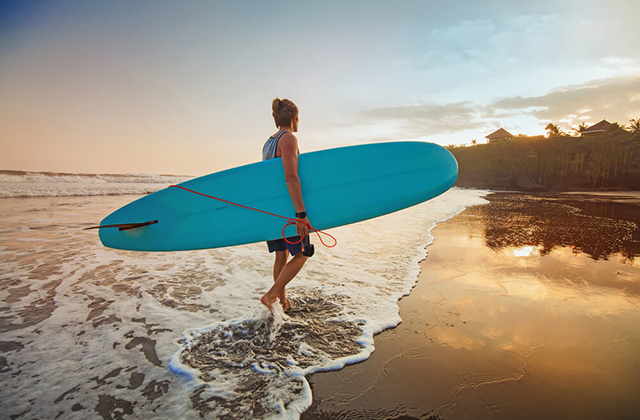Surf contest continues to bring joy to millions across the globe as it has for almost 500 years. Throughout the summer, kids, teens, families, and salty dogs will hit the beach in droves, many wanting to try this exhilarating sport for the first time. Surfing sparks a sense of joy in the human soul and leaves one wanting more. While gliding down the glassy face of a wave, a deep connection is felt. Surfers eventually form a relationship with the ocean and begin building a deep felt respect and gratitude.
However, a relationship with surfing and the ocean isn’t formed overnight. There are obstacles to overcome and rules to play by. Learning to surf is a process; A process that is much more enjoyable when accompanied by personalized professional instruction. With proper training and instruction, surfing can be less frustrating with a much easier learning curve. Read below about our Tips for Success:
TRAINING/CONDITIONING
When beginning to surf, you will discover that a large percentage of your time is spent paddling. Depending on water temperature and wave intensity, paddling can be strenuous and exhausting. Without proper physical training, arms, shoulders, and back can quickly turn to jelly. If faced with the situation where a leash breaks, you want the confidence and ability to swim back to the beach safely. The best cross training for surfing is swimming. Swimming works the paddling muscles while engaging the cardiovascular system and building endurance.
CHOOSING EQUIPMENT
When selecting a surfboard for your first time out, it’s tempting to select the latest cutting edge pro-model shortboard. Beginners should start on longboards, preferably with a soft-top and safety fins. Pro Teck Safety fins help prevent getting sliced or cut by the sharp edges. A “Softop” surfboard will be much more forgiving than the typical fiberglass board. This will keep you and others safe while learning to maneuver correctly. Longboards are buoyant and wide; this helps with stability and makes catching waves much easier. The leash is another piece of equipment that is necessary at all times when surfing. The leash will not only keep you attached to your main flotation device (your surfboard) but it’s also a law at many beaches, with steep fines as deterrent for violation.
PRACTICE TECHNIQUES
Without proper instruction, bad habits can form unknowingly. Hours and hours of practicing something the wrong way will leave you exhausted and frustrated. Surfing is achieved through a progression of step-by-step methods, which eventually lead to wave riding. With many details throughout the methodology of surfing, it’s best to receive professional instruction when beginning. Paddling technique, positioning on the board, and pop-ups should all be practiced on the beach before entering the water. This will train your mind and body for the specific movements you’ll need to perform once in the surf. It’s also important to have a firm grasp on surf etiquette before entering the water.
CHOOSING A SURF SPOT
As a beginner, you want to look for an uncrowded, gentle break to build your experience in where there are not a lot of more experienced surfers around. Wave height, winds, currents, tides, bottom contours, and hardened structures, such as piers or jetties, are each factors to take into account when scanning a surf break. Gentle waves, sand bottom, and warm water are the ideal conditions for the beginner surfer. It is always a good idea to get insight from a local surfer or lifeguard when surfing an unfamiliar spot. Other things to be aware of include marine life and water quality. Again, local knowledge and posted signs are the best way to stay informed.




